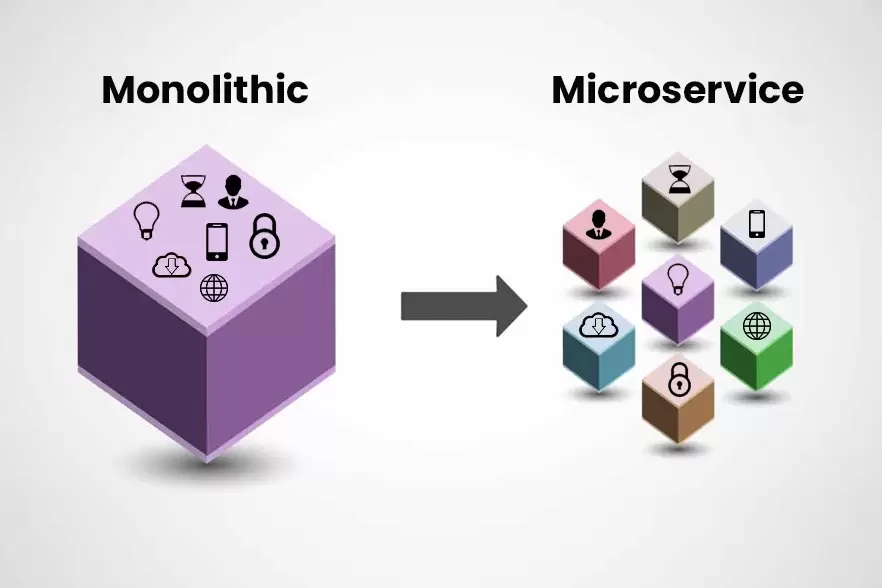Introduction: Two popular architectural paradigms in mobile application development are the microservices architecture and the monolithic approach. Each strategy addresses the particular requirements of contemporary mobile applications and has its own set of problems and answers. In this post, we explore the nuances of both methods, looking at the challenges each pose and how to get past them.
Understanding Monolithic Architecture
The monolithic architecture entails building an application as a single, indivisible unit. All components, including the user interface, business logic, and data access layers, are tightly coupled within a single codebase. While this approach simplifies initial development and deployment, it can pose significant challenges as the application scales.
Challenges of Monolithic Architecture
Complexity: Monolithic applications tend to become increasingly complex over time, making it difficult to maintain and enhance them.
Scalability: Scaling a monolithic application often involves scaling the entire application, which can be inefficient and costly.
Technology Lock-In: Monolithic architectures often rely on specific technologies and frameworks, limiting flexibility and hindering technology adoption.
Solutions for Monolithic Challenges
Modularization: Breaking down the monolith into smaller, manageable modules can help mitigate complexity and facilitate independent development and deployment.
Containerization: Adopting containerization technologies such as Docker allows for better isolation of components and simplifies deployment across different environments.
Continuous Integration and Deployment (CI/CD): Implementing CI/CD pipelines streamlines the development process, enabling frequent releases and faster time-to-market.
Exploring Microservices Architecture
Microservices architecture decomposes an application into a set of loosely coupled services, each responsible for a specific business function. These services communicate through lightweight protocols such as HTTP or messaging queues, enabling greater agility and scalability.
Challenges of Microservices Architecture
Distributed Systems Complexity: Managing a distributed system introduces complexities such as network latency, service discovery, and fault tolerance.
Data Management: Ensuring data consistency and integrity across multiple services can be challenging, especially in scenarios involving transactions spanning multiple services.
Operational Overhead: Deploying and managing a large number of microservices require robust infrastructure and operational expertise.
Solutions for Microservices Challenges
Service Mesh: Implementing a service mesh provides capabilities such as service discovery, load balancing, and traffic management, easing the operational burden of managing microservices.
Event-Driven Architecture: Embracing event-driven patterns allows for asynchronous communication between services, promoting decoupling and scalability.
Polyglot Persistence: Adopting polyglot persistence enables each microservice to use the most suitable data storage technology for its specific requirements, promoting flexibility and performance.
Conclusion
Both monolithic and microservices architectures offer distinct advantages and challenges in mobile application development. While monolithic architectures provide simplicity and ease of initial development, microservices architectures offer scalability and agility. By understanding the challenges inherent in each approach and employing appropriate solutions, developers can navigate the complexities of modern mobile application development effectively. Ultimately, the choice between monolithic and microservices architectures should be guided by the specific requirements and constraints of the project, aiming to strike a balance between simplicity and scalability.
What is the difference between monolithic and microservices architectures in mobile application development?
This FAQ addresses the fundamental distinctions between monolithic and microservices architectures, highlighting their respective approaches to organizing and scaling mobile applications.
What are the main challenges associated with monolithic architecture in mobile app development?
This question explores the specific hurdles developers face when adopting a monolithic architecture, such as complexity, scalability limitations, and technology lock-in.
How does microservices architecture address the challenges of scalability in mobile app development?
Here, we delve into how microservices architecture facilitates scalability by breaking down applications into smaller, independent services that can be deployed and scaled individually.
What are some strategies for managing the complexities of distributed systems in microservices architecture for mobile apps?
This FAQ delves into practical solutions for handling the intricacies of distributed systems, including the adoption of service meshes, event-driven architecture, and polyglot persistence.
Which architecture—monolithic or microservices—is better suited for a particular mobile app development project?
Finally, this question explores the factors that influence the choice between monolithic and microservices architectures, emphasizing the importance of considering project requirements, scalability needs, and development team expertise.


